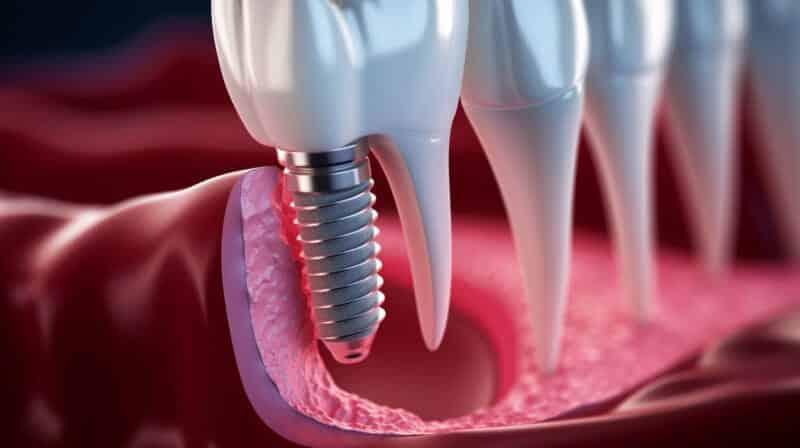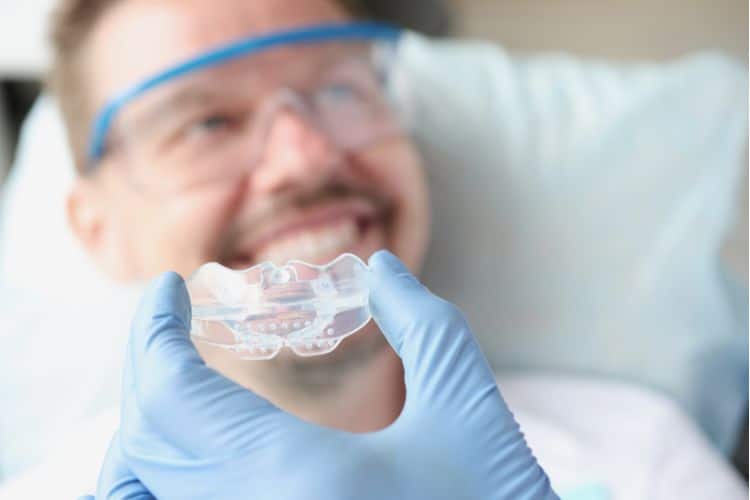Welcome to our insightful exploration of a critical element in dental implant surgery – bone grafting.
We understand that the concept might appear daunting at first, but believe us, there’s no need for apprehension! In fact, by understanding the ins and outs of bone grafting in dental implant surgery, it can become a less intimidating and much more fascinating subject.
Bone grafting plays a key part in dental restoration, particularly when it comes to success rates of dental implants. So curl up in your favorite chair, grab a cup of coffee, and join us as we pull back the curtain on this highly technical yet incredibly important process. 🦷💡
In the sections that follow, we will delve into the different cases 🗂️ outlining the success rates of dental implants, comparing implants placed in natural and grafted bone, presenting must-know statistics on dental bone grafts, and exploring the latest advancements in bone grafting techniques.
Saddle up and let’s kick start our journey through the magnificent world of dental implant surgery and bone grafting! 🚀
Table of Contents
Different cases of success rates of Dental Implants
Odds are you’ve often wondered about the success rate of dental implants if you’ve ever thought about upgrading your smile. You may have seen varying success rate figures tossed around and wondered which one to trust. So, are you in luck? Absolutely! We’re here to break down the various cases of success rates based on different criteria. By the end of this segment, you’ll have a clearer view of what these figures mean and what you might expect.
The world of dental implants is diverse. These tiny wonders can be placed in grafted bone, meaning the dentist adds new bone to your jaw. With this method, we’re seeing stellar figures. The survival rates for dental implants in grafted bone range impressively from 97.3% – 100%. To sweeten the deal, the mean hovers around 98.5%. That’s almost perfection, isn’t it? 🎯
Another popular procedure involves simultaneous sinus augmentation during implant placement. Sounds fancy, doesn’t it? This process increases the height of your upper jaw by adding bone between your jaw and maxillary sinuses (on either side of your nose). A survival rate of 92.5% is attached to this complex procedure, proving the marvels of modern dentistry.
Bone Grafting
Now, let’s shift gears a bit and take a look at the national perspective. There’s good news here too. The national success rate of dental implants stands at an impressive 98%. That’s practically a homerun! 🏆
To cap it all, let’s talk time. Implants’ durability is crucial, and a reveal of a 97% success rate at 10 years and a considerable 75% at 20 years is heartening. It’s amazing how robust these little lifesavers can be.
So, there you have it! The diverse world of dental implants decoded for you. Now that we’re all on the same page and are clear on what to expect, it’s the best time to dive in and explore more on the Success Rate of Dental Implants. There’s so much more to learn about this fantastic procedure! Gear up, smile bright! 🚀🌟
Comparison between Implants placed in natural and grafted bone
Implants are a fantastic way to replace missing teeth and restore a brilliant smile. But did you know there’s a significant difference between an implant placed in natural bone compared to one placed with a bone graft? Here, we will delve into the two techniques, uncovering their dissimilarities and highlighting their strengths. Let’s get a bite into this topic! 😊
The Basics: Natural Bone vs. Grafted Bone
Before we sink our teeth into the comparison, let’s understand what we mean by natural bone and grafted bone:
- Natural bone: This term refers to your original jaw bone that has not been subjected to any grafting procedures.
- Grafted bone: A bone graft is a procedure where a surgeon adds new bone to your jaw bone. It can be obtained from a donor or be synthetic.
The bone chosen for your implant can significantly impact the implant’s outcome and longevity. But which gives better results? That’s what we’re here to find out!
Comparing The Success Rates
Dental professionals continually utilize both natural and grafted bone for successful implants, but statistics reveal differences in their success rates. Implants placed in natural bone show an impressive five-year survival rate of 92%. However, those placed in grafted bone slightly trail behind at a 90% survival rate.
Although this difference may seem minimal, it can mean the world when it involves something as precious as your smile! Let’s explore this intriguing statistic further.
Exploring The Reasons for The Difference
The slight edge natural bone implants hold over grafted ones may stem from a few reasons:
- The body tends to accept natural bone more readily, fostering a faster healing process.
- With grafted bone, there’s always a risk of the body rejecting the foreign material.
- Implants placed in natural bone often prove more stable in the long run, emphasizing their high survival rate.
Though grafted bone may show a slightly lower survival rate, remember that 90% is still a high percentage. Bone grafts are particularly useful in cases where natural bone shortages exist. They’re an excellent option to create a strong base and offer patients a second chance at a fully functional set of teeth.
So, whether you’re considering an implant in your natural bone or with a grafted bone, be assured that both paths lead to a successful implant journey. It’s all about assessing and selecting what suits your dental needs best. After all, you’re only one dental appointment away from a perfect, dazzling smile! 😁
Statistics on Dental Bone Grafts
The success of dental procedures often depends on the health of the patient’s jawbone. If the bone is weak or thin, a dental bone graft may be necessary to boost the success rate of the surgery. With modern advances in dental technology and procedure techniques, dental bone grafts have seen impressive success rates.
Amazingly, research shows that dental bone grafts have a significant 99.6% survival rate, which means the transplanted bone sustains and accepts the graft. This promising statistic indicates the proficiency of contemporary dental health practices, and reliability when considering graft surgery.
Bone Grafting
Apart from the high survival rate, almost 70% of these procedures achieve their desired results soon after the surgery. This statistic showcases the effectiveness of bone grafting in enhancing the conditions required for successful dental procedures.
Dental implants, a common dental procedure, also benefit from bone grafting. Through our collected statistics, bone grafts can improve the success rate of dental implants, ensuring they are securely anchored to the jaw for a natural look and feel.
Furthermore, bone grafts enjoy an average overall success rate of roughly 99%. Thus, for those worrying about a bone graft procedure, these numbers should provide a significant amount of comfort.
To further bolster this confidence, it’s important to mention that bone grafts have a successful follow-up rate of at least 90% for dental implant procedures. The sustainable success of grafting procedures has made it a reliable choice within the dental sector.
- 99.6% survival rate of dental bone grafts
- Nearly 70% procedural success rate after surgery
- Dental implants success enhanced through bone grafting
- Bone grafts’ success rate is nearly 99%
- Bone grafts have a 90% success rate for dental implant procedure follow-ups
The enlightening figures above provide hope for every patient considering a bone graft. The impressive milestones achieved in this sector show that more smiles will continue to be saved, showing that with every procedure, our dental industry professionals are making significant strides in preserving and maintaining good oral health for all.
Instead of visibility portraying worry, these reassuring figures mentioned throughout this article should provide comfort to patients and reinforce faith in their dental practitioners. Our effort to compile and narrate these accurate statistics serves as a testament to the evolution and growth of dental practices in contributing to overall oral health and wellness.
Advancements and improvements in Bone Grafting techniques
The world of dentistry has seen countless innovations in recent years—one of the most significant ones being the advancements in bone grafting techniques. From enhancing the success rate of dental implants to making previously impossible treatments possible, these breakthroughs have truly revolutionized the way we approach dental health. 🎉
Once upon a time, those with inadequate bone quality faced an uphill battle if they ever wanted dental implants. However, the recent significant advancements in bone grafting techniques have made dental implant treatments a reality for these cases. Thanks to these improvements, dental treatments that seemed straight out of a science fiction movie are now within reach!
One of the key factors in the successful implementation of dental implants is osseointegration. The all-important process, where the dental implant integrates with the jawbone, has been enhanced dramatically with the advent of advanced bone grafting techniques. With better osseointegration comes a higher success rate for dental implants—it’s a win-win scenario for everybody! 🏆
Bone Grafting
In parallel to bone grafting techniques, there have also been impressive advancements in biomaterials and our methods for bone augmentation. These biomaterials and methods now offer versatile solutions accommodating a variety of clinical scenarios. Today, we can confidently say that we can provide safer and more effective treatments to our patients. 👍
However, despite these impressive advancements, we mustn’t forget the journey we’ve embarked on. Remember, bone grafting techniques and materials have greatly evolved over the years. From the materials used to the actual surgical techniques, each element has been fine-tuned to ensure the best possible outcomes. This journey continues, and with each passing day, we get closer to further simplifying the process and setting new records in dental health. 💪
Innovation has led us this far, and it will undoubtedly continue to guide us into the future. With diligent research and unwavering dedication, we hope to keep advancing and enhancing our bone grafting techniques. We are committed to making dental health accessible, efficient, and effective for all. Here’s to many more advancements in the world of dental health! 🎉
Conclusion
As we draw this insightful journey to a conclusion, it’s clear that advancements in dental implant surgery, and particularly in bone grafting techniques, have come a long way. Expertly combining science and skill, dental professionals are now able to offer more options and higher success rates, resulting in healthier and more beautiful smiles for patients.
At Wilshire Smile Studio, we’re proud to be a part of this evolution. We constantly stay at the forefront of technology and techniques, ensuring our patients receive the most advanced and effective treatments.
Whether you are considering dental implants or any other form of cosmetic dentistry, our experienced team is ready to guide you through your journey. We understand that each smile is unique, and that’s why we personalize every treatment plan to meet your specific needs and goals.
Let’s not forget about the affordability and accessibility we offer. Dental care shouldn’t be a luxury but a standard. At Wilshire Smile Studio, we’ve made it our mission to ensure that everyone has access to the best dental care they deserve.
So why wait? Begin your journey towards a healthier, more brilliant smile today. Visit us at Wilshire Smile Studio and let us transform your smile, and your life, for the better. We can’t wait to meet you!
Remember, your smile is the reflection of your health, beauty, and confidence. Let us help you make it the best it can be with our state-of-the-art dental services.
Book your free consultation with us online or call (323) DENTIST (323-336-8478) today.
Frequently Asked Questions
1. What is bone grafting in dental implant surgery?
Bone grafting in dental implant surgery is a procedure in which a small amount of bone is taken from another part of the body or a synthetic material is used to fill in areas of the jawbone where there is insufficient bone density or volume to support a dental implant.
2. Why is bone grafting necessary for dental implant surgery?
Bone grafting is necessary for dental implant surgery when the jawbone lacks sufficient density or volume due to reasons such as tooth loss, gum disease, trauma, or bone resorption. It provides a solid foundation for the implant to integrate and helps in achieving long-term implant success.
3. How long does the bone grafting process take?
The bone grafting process timeline can vary depending on factors such as the extent of grafting needed, the patient’s overall health, and the type of grafting material used. In general, it can take several months for the graft to heal and integrate with the existing bone before dental implant placement.
4. What are the different types of bone grafting materials used in dental implant surgery?
There are several types of bone grafting materials used in dental implant surgery, including autografts (patient’s own bone), allografts (donor bone from another human), xenografts (animal-derived bone), and alloplasts (synthetic materials). The choice of grafting material depends on various factors and is determined by the dentist or oral surgeon.
5. Does bone grafting increase the success rate of dental implants?
Yes, bone grafting significantly increases the success rate of dental implants. By providing a stable and supportive environment for the implant, bone grafting enhances osseointegration, which is the process of the implant fusing with the surrounding bone. It helps in achieving a secure and long-lasting foundation for the dental implant.









